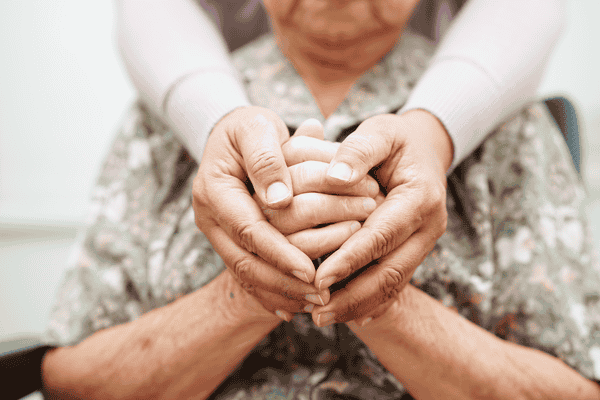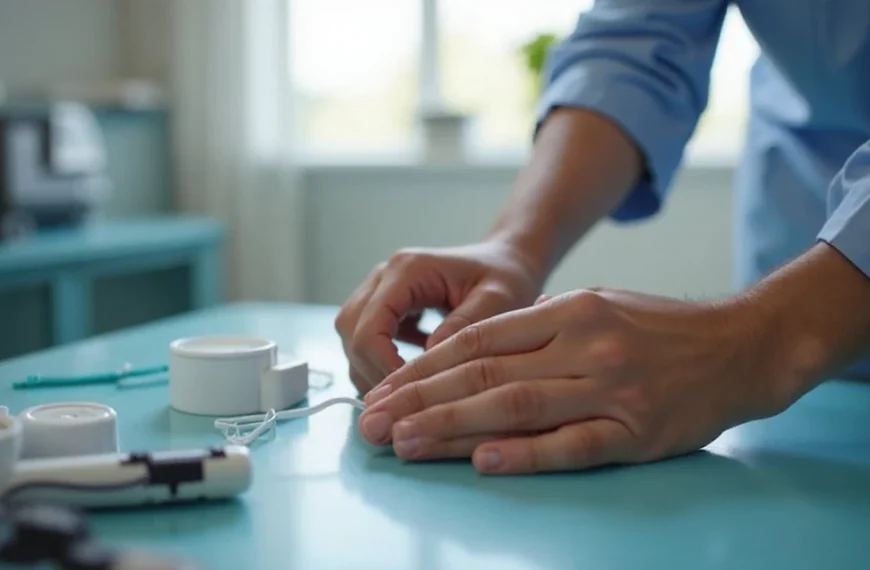In the tapestry of life, there comes a time when the threads begin to fray, and we find ourselves facing the most challenging of crossroads. This intersection, where hope meets reality and comfort becomes paramount, is where the concepts of palliative care and hospice converge. For many families grappling with serious illnesses, understanding the nuances between these two paths can feel like navigating a labyrinth blindfolded, each turn offering its own unique blend of support and solace.
As we embark on this exploration of palliative care and hospice, we’ll weave through the stories of those who have walked these paths, illuminating the distinctions and similarities that define these crucial forms of care. Through their experiences, we’ll gain not just knowledge, but also insight into the profound impact these care options can have on patients and their loved ones during life’s most vulnerable moments.
The Journey Begins: Sarah’s Story
Imagine a sun-dappled garden, bursting with colorful blooms and the gentle hum of bees. This is where we first meet Sarah, a vibrant woman in her early seventies, whose green thumb has always been the envy of her neighborhood. A retired schoolteacher with a penchant for nurturing both plants and young minds, Sarah’s life was a tapestry of joy, wisdom, and community involvement. Her family gatherings were legendary, filled with laughter, her famous apple pie, and stories that bridged generations.
But life, much like the seasons in Sarah’s beloved garden, is prone to unexpected changes. On a crisp autumn morning, as Sarah tended to her chrysanthemums, a persistent cough that she had attributed to the changing weather suddenly became more than just a nuisance. A visit to the doctor, followed by a battery of tests, led to a diagnosis that shook the very foundation of Sarah’s world: advanced lung cancer.
The news fell like a heavy frost on Sarah’s family, withering their sense of normalcy and leaving them grasping for hope. As they rallied around her, they quickly realized that the path ahead was not just about fighting the disease, but also about navigating a complex landscape of care options they had never before considered.
Understanding Palliative Care: A Beacon of Hope
In the midst of their initial shock and grief, Sarah’s oncologist introduced a concept that would become a lifeline for the family: palliative care. But what exactly is palliative care, and how does it differ from the more familiar concept of hospice?
Palliative care can be likened to a warm, comforting blanket that envelops patients facing serious illnesses, regardless of their prognosis or life expectancy. It’s a holistic approach that focuses on providing relief from the symptoms and stress of a serious illness, with the ultimate goal of improving quality of life for both the patient and their family.
For Sarah, the introduction of palliative care meant that while she continued her chemotherapy sessions, a dedicated team worked tirelessly to alleviate the side effects and enhance her overall comfort. This team, a mosaic of compassionate professionals, included a palliative care doctor, nurses specialized in symptom management, a social worker to address emotional and practical concerns, and even a chaplain to provide spiritual support.
Dr. Elena Rodriguez, Sarah’s palliative care physician, explains the philosophy behind this approach: “Palliative care is about living well, despite serious illness. We focus on the person, not just the disease. Our goal is to help patients like Sarah maintain their dignity, manage their symptoms effectively, and find moments of joy even in the midst of challenging treatments.”
The Multifaceted Approach of Palliative Care
Sarah’s experience with palliative care was multifaceted, addressing not just her physical symptoms but also her emotional and spiritual well-being. The team helped manage her nausea and pain, crucial side effects of her chemotherapy, allowing her to maintain enough strength to tend to her beloved garden on good days. They provided counseling to help her navigate the anxiety and depression that often accompanied her diagnosis, offering tools and strategies to find moments of peace amidst the storm of her illness.
Perhaps most importantly for Sarah, the palliative care team helped her maintain a sense of control over her life and treatment decisions. They facilitated open conversations with her family about her wishes, fears, and hopes, ensuring that her voice remained central in all aspects of her care.
Sarah’s daughter, Emily, reflects on this period: “The palliative care team was like a lighthouse for us in those stormy early days. They helped Mom manage her pain and nausea, but they did so much more than that. They helped us understand what was happening, what to expect, and how to make the most of our time together. They gave us back a sense of control when everything felt like it was spiraling.”
The Continuum of Care
One of the most significant aspects of palliative care is its flexibility. It can be provided alongside curative treatments, offering an extra layer of support at any stage of a serious illness. For Sarah, this meant she could continue her chemotherapy regimen while receiving comprehensive supportive care.
Dr. Rodriguez emphasizes this point: “Palliative care is not about giving up hope for a cure. It’s about adding an extra dimension of support to whatever treatment path a patient chooses. We work in tandem with the patient’s other medical teams to ensure that their quality of life remains a priority throughout their journey.”
This continuum of care allowed Sarah to maintain her roles as mother, grandmother, and community member even as she battled her illness. With her symptoms better managed, she found the strength to attend her grandson’s school play, host modified versions of her famous family dinners, and even continue her volunteer work at the local community garden, albeit in a reduced capacity.
The Transition: When Palliative Care Evolves into Hospice
As months passed, Sarah’s journey took another turn. Despite the valiant efforts of her medical team and her own indomitable spirit, it became clear that the curative treatments were no longer effective. Sarah’s oncologist, Dr. James Chen, had the difficult task of conveying this news to Sarah and her family.
“It’s never easy to have these conversations,” Dr. Chen shares. “But thanks to the groundwork laid by the palliative care team, Sarah and her family were better prepared to face this transition. They had already had many discussions about Sarah’s values and wishes, which made the decision-making process, while still heartbreaking, a bit less overwhelming.”
It was at this juncture that the concept of hospice care entered the conversation. The shift from palliative care to hospice care marked a profound moment of reflection for Sarah and her loved ones, a time to reevaluate goals and prioritize comfort above all else.
Embracing Hospice: A New Chapter in Sarah’s Journey
Hospice care, often misunderstood and sometimes feared, is specifically designed for individuals in the final stages of a terminal illness, typically with a prognosis of six months or less to live. Unlike palliative care, which can be provided alongside curative treatments, hospice care shifts the focus entirely to comfort and quality of life, rather than attempting to cure the underlying condition.
For Sarah, the decision to transition to hospice care was both a relief and a poignant acknowledgment of her mortality. “It wasn’t an easy decision,” Emily recalls, “but Mom approached it with the same grace and strength she’d shown throughout her entire journey. She told us, ‘I’ve lived a full life, and now I want to make sure my final chapter is written on my own terms.'”
The Hospice Philosophy: Dignity in Life’s Final Chapter
Sarah’s hospice team, led by Dr. Maria Sanchez, approached her care with a philosophy centered on dignity, comfort, and meaningful connections. “In hospice, our goal is to help patients live as fully as possible for as long as possible,” Dr. Sanchez explains. “We focus on managing symptoms effectively, providing emotional and spiritual support, and helping both the patient and their family make the most of their time together.”
The hospice team transformed Sarah’s home into a haven of comfort and peace. They provided specialized medical equipment, like a hospital bed that allowed Sarah to look out at her garden, and trained her family in basic caregiving techniques. Nurses visited regularly to manage Sarah’s pain and other symptoms, ensuring she remained as comfortable as possible.
But hospice care extended far beyond medical management. A social worker helped Sarah and her family navigate the complex emotions that come with end-of-life care, offering counseling and resources for coping with grief. A chaplain provided spiritual support, helping Sarah find peace and closure as she reflected on her life and legacy.
Cherishing Final Moments: The Gift of Hospice
One of the most profound aspects of hospice care for Sarah and her family was the emphasis on cherishing every moment. The hospice team encouraged them to continue creating memories and expressing love in whatever ways felt meaningful to them.
Emily shares a particularly touching moment: “The hospice team helped us organize a small garden party for Mom. They worked with us to manage her symptoms so she could sit outside among her flowers one last time. We had tea, shared stories, and even helped her plant a few seeds. It was a beautiful day that we’ll treasure forever.”
This focus on quality of life and meaningful experiences is at the heart of hospice care. Dr. Sanchez notes, “Our role is not just to manage physical symptoms, but to help patients and families find moments of joy, peace, and connection, even in the face of impending loss.”
Comparing Palliative Care and Hospice: Similarities and Differences
While Sarah’s journey illustrates the transition from palliative care to hospice, it’s important to understand both the similarities and differences between these two approaches to care.
Shared Goals: Comfort and Quality of Life
Both palliative care and hospice share fundamental goals: to improve the quality of life for patients facing serious illnesses and to provide support for their families. They both prioritize symptom management, emotional and spiritual support, and personalized care that aligns with the patient’s values and preferences.
Dr. Rodriguez reflects on this commonality: “Whether in palliative care or hospice, our focus is always on the person, not just the disease. We strive to understand what matters most to each patient and tailor our care to support those priorities.”
Key Differences: Timing, Treatment Goals, and Settings
Despite their shared philosophy, there are significant differences between palliative care and hospice:
- Timing and Eligibility: Palliative care can be provided at any stage of a serious illness, often alongside curative treatments. Hospice care is specifically for patients with a life expectancy of six months or less who have decided to stop curative treatments.
- Treatment Goals: Palliative care supports ongoing curative treatments while managing symptoms and improving quality of life. Hospice care focuses exclusively on comfort and quality of life, without attempting to cure the underlying condition.
- Care Settings: Palliative care can be provided in various settings, including hospitals, outpatient clinics, or at home. Hospice care is often provided in the patient’s home but can also be offered in hospice facilities or hospitals.
- Insurance Coverage: While both types of care are often covered by insurance, including Medicare, the specifics can vary. Hospice care typically includes more comprehensive coverage for medications, medical equipment, and support services related to the terminal illness.
Navigating the Decision: When to Consider Palliative Care or Hospice
For families facing serious illnesses, knowing when to consider palliative care or hospice can be challenging. Dr. Chen offers some guidance: “Palliative care can be beneficial from the moment of diagnosis of a serious illness. It’s never too early to focus on quality of life and symptom management.”
As for hospice, Dr. Sanchez advises, “When curative treatments are no longer effective or desired, and the focus shifts to comfort and quality of life in the final months, it’s time to consider hospice. The earlier hospice is involved, the more support and benefit patients and families can receive.”
The Impact on Families: A Support System Beyond the Patient
Both palliative care and hospice recognize that serious illness affects not just the patient but the entire family unit. These approaches offer crucial support to caregivers and loved ones, helping them navigate the practical and emotional challenges of caring for someone with a serious illness.
Emily reflects on this aspect of her family’s experience: “The support we received as a family was invaluable. From teaching us how to care for Mom to helping us process our grief, both the palliative care and hospice teams became like extended family. They guided us through the hardest days with compassion and expertise.”
Looking to the Future: Advancing Care for Serious Illness
As medical science advances, so too does our understanding of how to care for those facing serious illnesses. Both palliative care and hospice continue to evolve, with increasing recognition of their importance in healthcare systems worldwide.
Dr. Rodriguez notes, “We’re seeing a growing awareness of the benefits of early palliative care intervention. Studies have shown that palliative care can not only improve quality of life but in some cases, even extend life for patients with serious illnesses.”
Similarly, hospice care is expanding its reach and refining its approaches. Dr. Sanchez shares, “We’re working on ways to make hospice care more accessible and tailored to diverse cultural needs. The goal is to ensure that everyone has access to compassionate, dignified care at the end of life.”
Conclusion: Embracing Compassion in the Face of Serious Illness
Sarah’s journey through palliative care and hospice illustrates the profound impact these approaches can have on patients and families facing serious illnesses. From the moment of her diagnosis to her final days, she was surrounded by care that prioritized her comfort, dignity, and personal wishes.
As we navigate the complex landscape of healthcare options for ourselves or our loved ones, understanding the roles of palliative care and hospice empowers us to make informed decisions that align with our values and goals. Whether it’s the comprehensive support of palliative care alongside curative treatments or the focused comfort of hospice care in life’s final chapter, these approaches offer a beacon of compassion and dignity in challenging times.
Emily, reflecting on her mother’s journey, offers a final thought: “Mom’s illness was the hardest thing our family has ever faced. But the care and support we received through palliative care and hospice allowed us to focus on what really mattered – loving each other and making the most of our time together. In the end, that’s what it’s all about.”
As we close this exploration of palliative care and hospice, let us carry forward the lessons of compassion, dignity, and person-centered care that define these approaches. In doing so, we honor not just Sarah’s memory, but the countless individuals and families who navigate these paths with courage and grace every day.






Thanks for this wondrous post, I am glad I detected this web site on yahoo.
Oh my goodness! an amazing article dude. Thank you However I am experiencing situation with ur rss . Don’t know why Unable to subscribe to it. Is there anyone getting an identical rss problem? Anyone who is aware of kindly respond. Thnkx
Howdy! I could have sworn I’ve been to this blog before but after checking through some of the post I realized it’s new to me. Nonetheless, I’m definitely glad I found it and I’ll be bookmarking and checking back frequently!
Excellent weblog right here! Also your web site rather a lot up fast! What host are you using? Can I get your affiliate link on your host? I desire my site loaded up as quickly as yours lol
I like the efforts you have put in this, regards for all the great articles.
I don’t commonly comment but I gotta state appreciate it for the post on this great one : D.